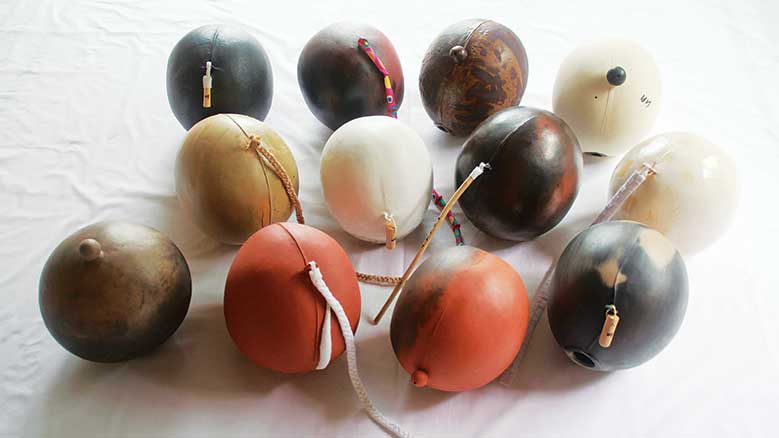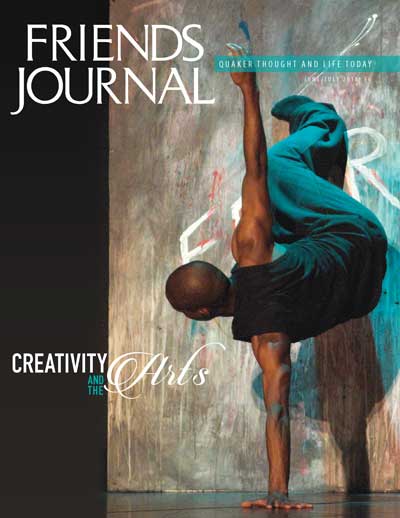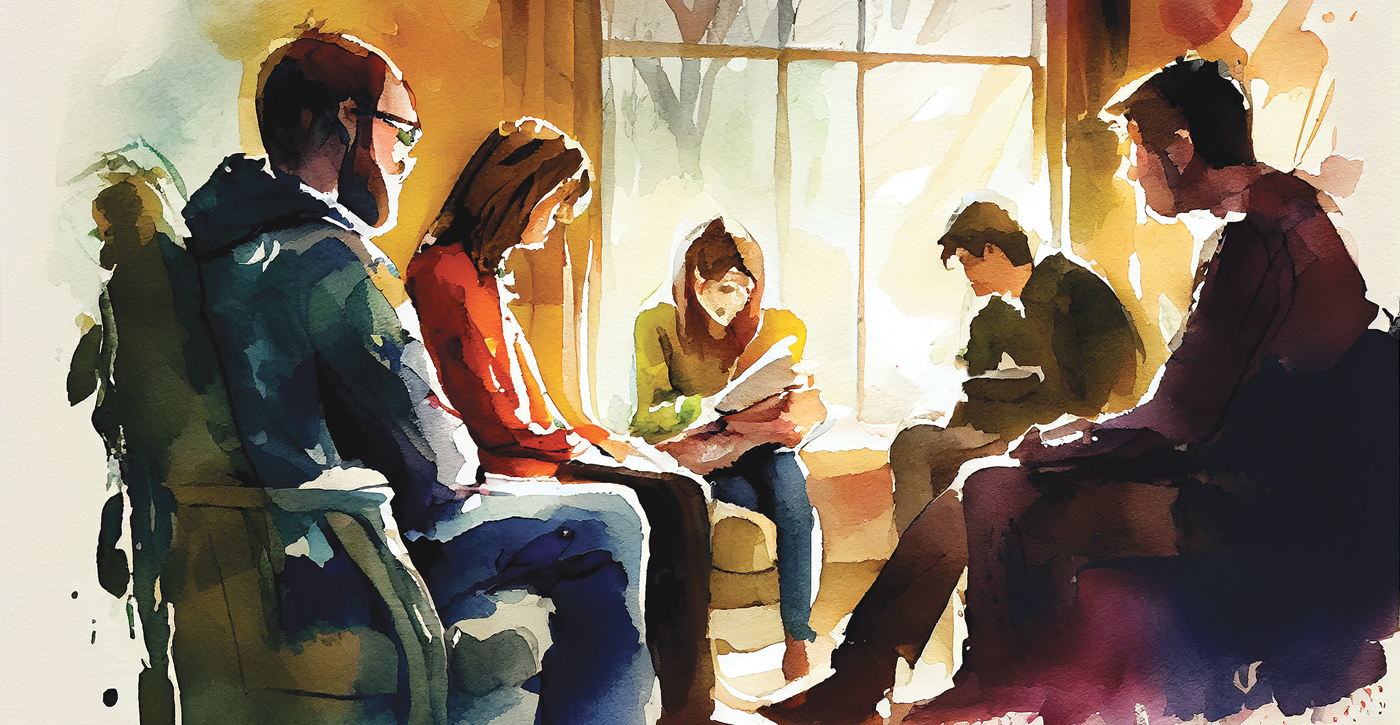
It is extremely hard to teach and share about spirituality, especially Quaker spirituality. Ours is a world where materialism and capitalism can be so prevalent that they encroach upon a person’s psyche and control his or her everyday decisions. No matter how eloquently Quaker ministers try to speak to people’s conditions, there are still people who never experience the Inner Light awakening in them. I often wonder: how can ministers help other people to encounter spiritual awakening and restore their forgotten spiritual self? This question has been one of my ongoing quests as a spiritual director working in South Korea.
After graduating from seminary in the United States and while trying to figure out how I could share a ministry of spiritual direction to a wider audience, I came back to Korea. As a young and green minister, I learned that the field of spirituality and spiritual direction is still new to many Koreans. Whenever I introduced myself as a “spiritual director,” people, including my close Korean friends, asked me what it was. I was so confounded by their reaction. The more I explained the concept of spirituality with phrases such as “finding my deep self,” “living by the leading of the inner self which is connected to the source of Life,” and “accompanied by God’s leading,” the more confused they were. I was using a different language and living in a different world.
In this culture that is barren of spirituality, I discovered that art might be a door to the spiritual. A Korean friend who saw my artwork suggested that I do an art exhibition. She did not know how the art pieces were created, nor that they were the product of my own spiritual formation: a product out of God’s leading and revelation working through my hands. I asked her which pieces she liked, and she said she liked my “mothering” pieces. She said they brought her to tears.
The work was a women’s outcry against female sexual violence.
I had created these “mothering” pieces after my mother’s death. In my grieving process, I had such a deep desire to create female breasts. The point of me working with and through clay was to let my body lead the work, rather than my mind. At that time, the total number of pieces was only six: Bells of Breast, Bosom, Milk, Belly, Umbilical Cord, and Baby’s Bottom. They memorialized my mother’s care and love. However, I decided to create more artwork for an exhibition.
While I was working toward such an exhibit in 2012, I heard horrifying news about a gang rape on a bus in India. The whole world was outraged by the violence done to the young woman. During the same year, a 16-year-old girl in Morocco hanged herself to protest a Moroccan law that says a rape victim must marry the assaulter. The next year, there was an outcry by South Koreans after hearing the news that a young female child was assaulted by a pedophile, a result of the man’s addiction to child pornography. The young victim’s intestine, anus, and genital organs were heavily damaged, putting her life in jeopardy. Incidences of sexual violence toward women both in the military and universities in the United States were so high that U.S. Congress struggled to tackle the issue during this time.
When I heard the news of sexual assaults and harassment, I realized that the female body had become a sex object of hedonistic pleasure and a target for sexual violence as a result of consumer culture and the coercion of patriarchal society. I began to feel differently about my art pieces. The work I originally created to remember my mother’s love and caring for my own spiritual formation suddenly became a symbol of women’s pain, struggle, and oppression, as well as of women’s ignored sexual sanctity and power. The work was a women’s outcry against female sexual violence. My artwork became my proclamation of the social injustice done to all women and their bodies.
I hope people—both men and women—who looked at my work will eventually awaken to their oppressed feminine soul and spirit, and work toward restoration of embodied womanhood.
With the urgency for needed change in this matter, I created my art pieces and titled their theme Spirituality Series 1: Woman, rather than “mother” or “mothering.” It took about three years and seven months to finish the work. The process was so laborious and isolated that I sometimes felt that I was living in a small prison cell.
Since the work was about introducing and sharing the culture of spirituality (in this case, a spirituality of femininity), I tried to unify technical processes and content in the pieces I created for the exhibit. Pottery is a perfect technique to explore spirituality: clay is earthy material that grounds the human heart. The high-temperature firing process in a kiln is—as even some atheists admit—like spiritual work. It is a time when potters surrender to the order of Nature and let go of their control over the creative process. While laying down their own hope and desire for the work, potters commit their work to the fire and God, praying for God’s completion of the masterpiece. It is truly a spiritual exercise. For that reason, I chose pottery as the primary method to express the theme of the spirituality series. I knew that many women do hand-sewing as a daily common craft, and so I also used hand-sewing to symbolize women. Since sanded wood illuminates light and straw-craft is a traditional Korean art process, I added techniques to express the beauty of spirituality. Through all of these creative processes and materials, I sought to open awareness of Mother Nature’s energy, soul, and beauty: that is, feminine energy, soul, and beauty. My work focuses on the spirituality of motherhood, womanhood, femininity, and sexuality. It also focuses on the female body’s sanctity and holiness.
After completing the series, I submitted my portfolio to a public gallery owned by Seoul city. The art statement of Spirituality Series 1: Woman was as follows:
In patriarchal society and in this culture of distorted consumerism, women’s bodies have been abused and tortured as sexual objects and subjected to sexual violence. The suppression of this “femininity,” however, also means that the feminine tendency, Anima, present deep inside all men, is also oppressed and wounded. Thus, our collective soul is divided and distressed. To observe and nurture the inner world, to become one with the source and origin of Life within us, and eventually to restore our being and become whole is all part of a spiritual process to regain and maintain a healthy soul.
I seek to restore feminine brokenness in both men and women and mend the division and damage of our souls as I create female body parts, such as the breast, womb, and pregnant belly by using clay, wood, and fiber materials. As I address suffering, contempt, and pain experienced by women and their bodies, I also hope to offer celebration and splendor of the feminine in my work.
Fortunately, my portfolio with this statement was accepted with a high score. The installation process wasn’t as good as I’d hoped. To tell the truth, I was clumsy about setting up the time and had to postpone my opening date by a day. I even broke and fixed one piece during the installation. I did not do any promotion, such as making leaflets and sending them to newspapers to bring in more viewers. Still, 300 strangers entered the gallery and looked at my pieces; thousands more saw it as they stood outside or passed by the gallery. Nearly 30 people left written impressions in a guestbook. Their responses were, “I will try to be a good mother”; “I will think of women’s issues”; “the exhibit was new and hard.” I thought that was the beginning of sharing spirituality: a spirituality of women’s power and sanctity that I treasure. I hope people—both men and women—who looked at my work will eventually awaken to their oppressed feminine soul and spirit, and work toward restoration of embodied womanhood.
People saw the art, and it invited them to go inward.
I have rarely gotten to practice spiritual direction in the traditional way with two people talking in a private space. I have led workshops of art spiritual direction only twice since I came back to Korea, yet the art exhibit seems to have served a similar function. People saw the art, and it invited them to go inward. I hope the art exhibit can be used as a new, emerging form of ministry of spirituality and spiritual direction, so that people who are new to spirituality can encounter the divine movement in their lives. Perhaps the visual art form can help open their spiritual eyes.










When you look back upon creating these works, what testimonies do you now see, as impacting how you created them?
Would you say, the Testimony of Equality is a significant part of your manner of living as a Quaker, and therefore that part of your presence is within the works you created? Do you sense the presence of the artist in the work of others?
i began looking for the presence of the artist in their work, after reading one of the chapters in The Potters Companion.
What are your thoughts and feelings about this?
I appreciate how your art work can lead to greater Light sharing across cultures. I am especially struck by your use of pottery as your medium and your personal journey as a border crossing.
My experience with Korean spirituality differs . I have sensed much Light and I have learned deeply from individual Koreans and the long history of spiritual sharing and ethical traditions. I find this idea that : “This culture that is barren of spirituality” to need re-examining. Perhaps there is much to learn and experience from different expressions .
Here is a link to resources on the Dimensions of Asian Spirituality
https://www.jstor.org/bookseries/j.ctt46p04s?refreqid=excelsior%3Aa945592aaf34c94b52a2e945d93e7ea3
Here is the link to specifically Korean Spirituality:
https://www.jstor.org/stable/j.ctt6wr4rc
I so appreciate your work and your writing. And blessings as you seek creative ways to serve as a spiritual director in S. Korea. My friends at the Academy for Spiritual Formation are also working to invite people in your home country to consider spiritual direction as a vital spiritual practice. Thank you …
Wonderful article – and terrific reflections on art, spirituality and social change.